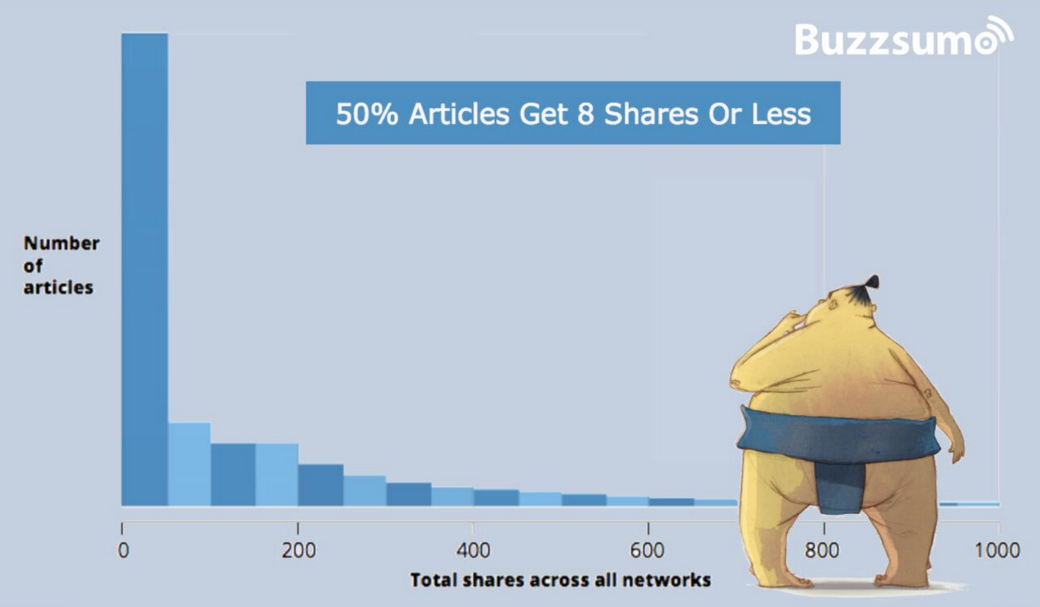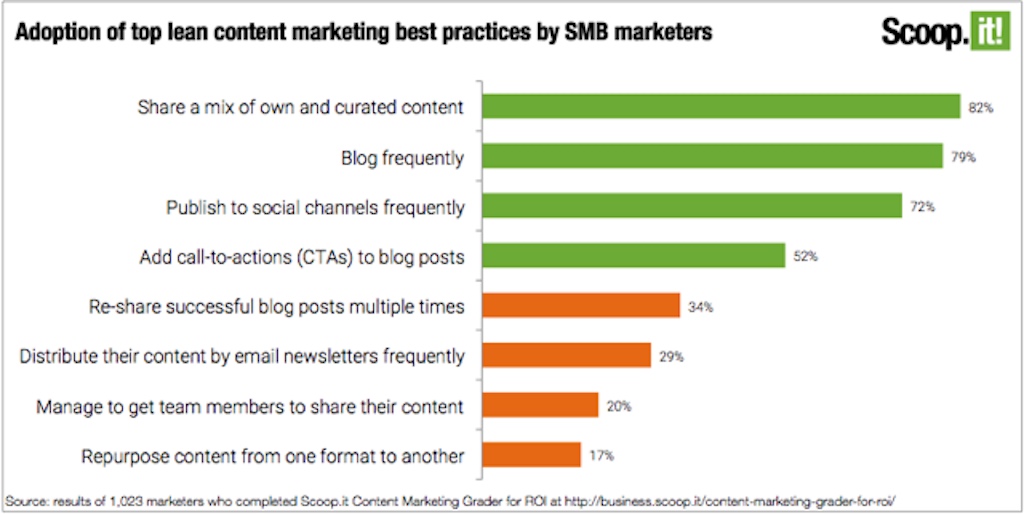
Content marketers have no shortage of advice when it comes to best practices. The industry clearly practices what it preaches and publishes a gigantic amount of content on… how to do content right.
So how do you cut through the clutter and get clarity on what’s important? Especially if you don’t have time to read everything or if you’re lost between dozens of not always consistent recommendations?
The Scoop.it Content Marketing ROI grader
Back in the fall, we launched our Content Marketing ROI grader as a simple tool to help small marketing teams assess whether they’re following the essential, efficient and lean best practices that top industry influencers have recommended and that we’ve observed and analyzed as proven to work.
Since then, we’ve seen an amazing response as not only did great marketers such as Andy Crestodina, Barry Feldman or Ian Cleary embrace the idea (and take the test themselves!) but more than 1,000 marketers from small or mid-size companies (SMBs) have now had their content marketing practices graded.
So what are your peers doing? What content marketing best practices are the most adopted? Which ones are still best-kept secrets? Here’s what we found out.
Most SMB marketers focus on content marketing 101: blogging and social media
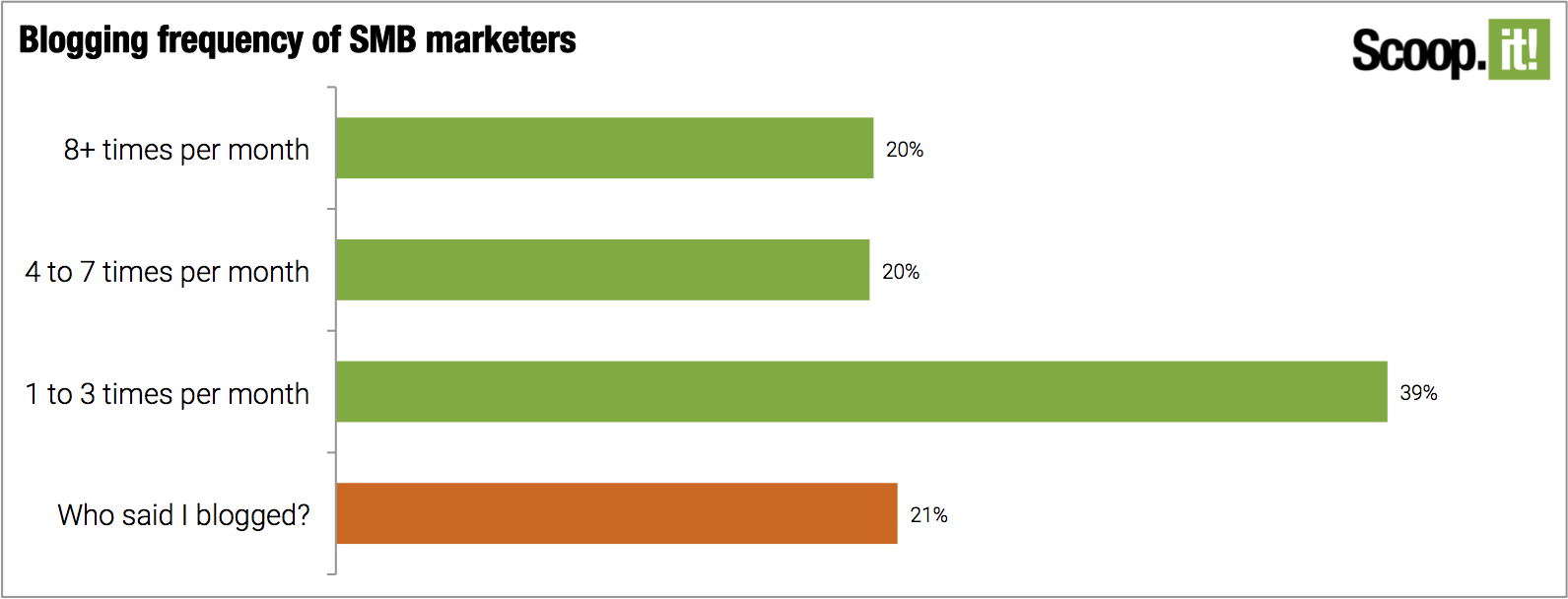
Perhaps unsurprisingly, content marketing starts with long-established channels – blogging and social media – for most marketers. More importantly, a vast majority of marketers have understood that publishing and distributing content consistently is key to success as 79% of them blog at least monthly (40% weekly or more) and 72% share content daily or more.
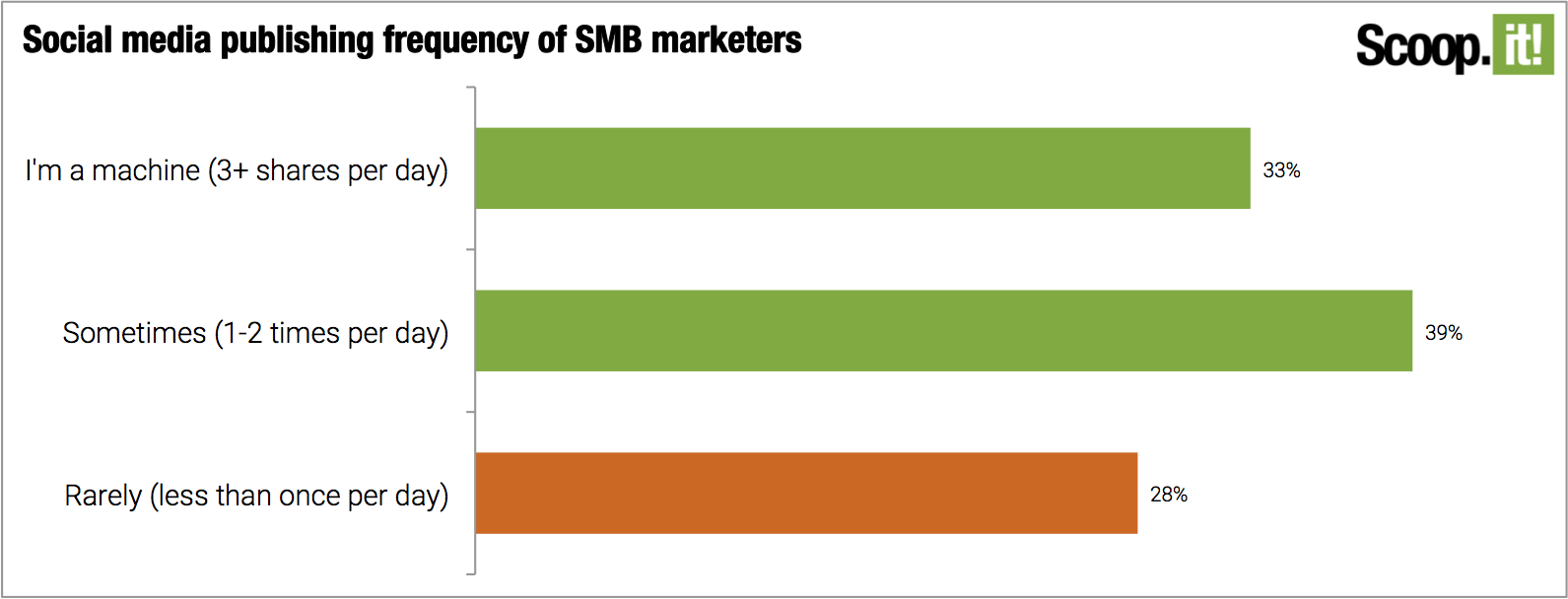 The end goal of blogging as a way to provide a recurring source of targeted traffic to convert from is understood: while a small minority of 52% systematically adds call-to-actions to convert readers into leads, another 32% swears they’re working on it. If you’re at the stage where you’re wondering how to do it or if you’re part of the 15% who wonder why the hell this is important, this post is for you.
The end goal of blogging as a way to provide a recurring source of targeted traffic to convert from is understood: while a small minority of 52% systematically adds call-to-actions to convert readers into leads, another 32% swears they’re working on it. If you’re at the stage where you’re wondering how to do it or if you’re part of the 15% who wonder why the hell this is important, this post is for you.
Marketers also seem to have embraced a balanced mix of original and curated content. Only a fraction (8%) of them share their own content only while most have understood that curating and sharing third-party content helped publish more while adding value and credibility to their brand.
Still, 21% admit to not blogging and 28% fail to update their social channels daily which is missing out on the most efficient and accessible way to generate traffic and leads with content.
Email distribution is overlooked
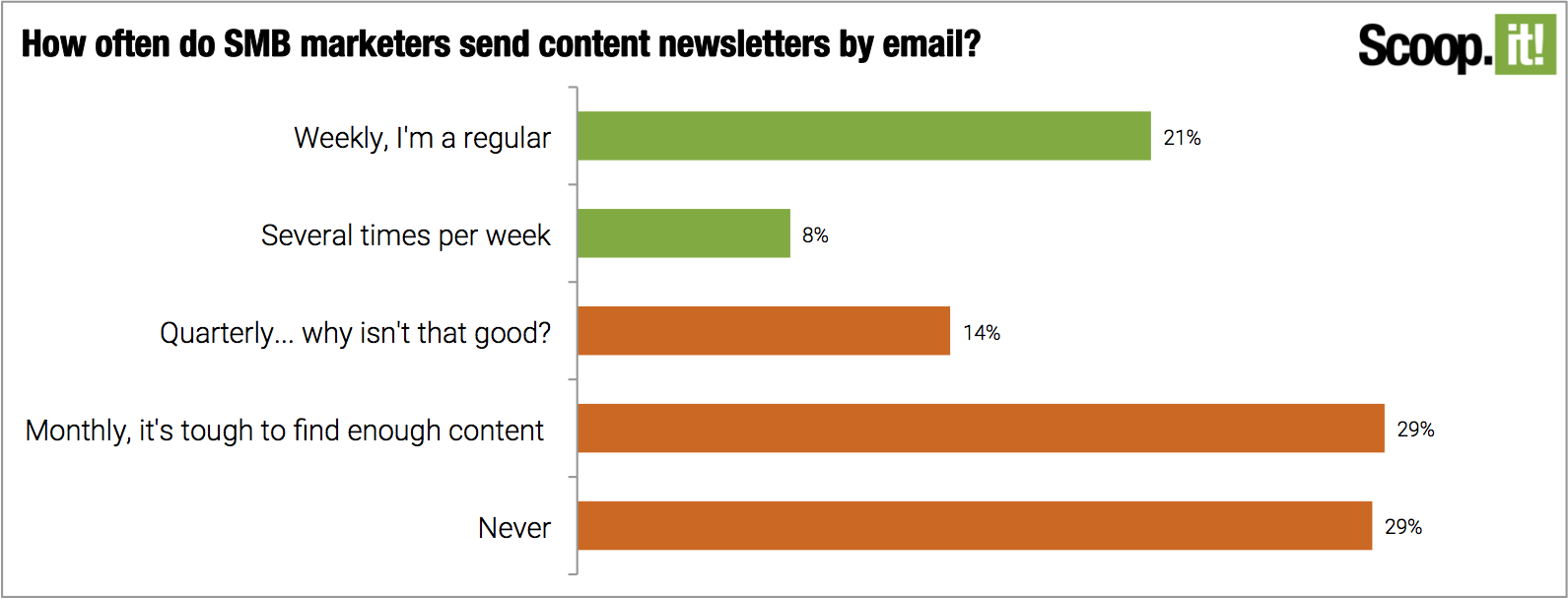
While intuition would drive to conclude old practices are the most adopted, what is true for blogging and social media is not true for email. Only 29% of marketers manage to send content by email newsletters on a weekly basis or more (just 8% being email rockstars with daily newsletters).
Why?
Based on qualitative interviews, several reasons come out for that:
- Spam concerns: there’s a cultural concern in many companies that sending emails too frequently is spam. That’s not what spam is about. Spam is about sending unwanted emails such as promotional content or irrelevant stuff like company news or, more generally speaking, company-centric content. Content marketing is not that. It’s about sending customer-centric content that educates, informs, entertains and add value to recipients. Content marketers sometimes have a hard time getting this accepted by the rest of the company and don’t always own the email list.
- Not enough good content: probably because of the above, the quality threshold for acceptable content seems to be perceived higher for email than blogging and social. What makes an acceptable blog post doesn’t always make the cut to be part of a more intrusive email newsletter. I would challenge the idea that it’s ok to publish bad content on a blog but the point is marketers often don’t have enough good content to send more emails. If this is your case, supplementing your own content with curated content is the most effective way to overcome that problem: we’ve shared how to do it and what results to expect here.
- Time consumed / complexity: last category, some marketers know they have to distribute their content by email but are finding the problem too complex and time consuming. While sending an email is easy, the content newsletter process is indeed more complex: ideally, you would want to analyze data to select what content to include and in which order, create a summary for each post to be included in the newsletter, copy/paste links (with appropriate analytics trackers), format the resulting email HTML, test over multiple devices, correct, etc… and schedule your email blast. If this feels too complex or if you simply don’t have time, you should consider tools that can automate this process for you and let you create an email newsletter in 10 minutes or less such as our own Scoop.it Content Director email editor.
These 3 best-kept secrets of content marketing can get you ahead of the pack
As content marketing matured over the past 2 years, sticking to 101-level practices is no longer going to be enough in 2016. And this is where we’ve observed the biggest opportunities for marketers to improve: without talking about valuable yet sophisticated or costly strategies such as influencer marketing or paid content promotion, here are 3 low-hanging fruits that a majority of marketers have been neglecting in 2015.
1. Social media amplification

While marketers do blog and share content, only a third of them are sharing their content multiple times on social media. Some think about promotion occasionally but a third confess to simply follow a “publish and pray” attitude. With the decline of organic reach on Facebook and the increasing competition for attention on all social networks, thinking a blog post will reach all your followers through a single share is an illusion in 2016. Rather, think like radio DJs when they launch new hits: program your new blog posts or eBooks multiple times over all your channels for a period of 4-8 weeks. Test multiple messages. And even re-share evergreen content over and over again. Of course this can be tricky (and there’s a risk of overdoing it), but not if you have the right tools.
2. Content repurposing
Whatever resources you have for content in 2016, chances are you’ll have to do more with less or more with the same. Why? Because of this chart:
 Content marketing is not just about publishing one epic piece of content occasionally. It’s also about quantity. Luckily, the recipe is clear: you should absolutely do that epic piece of content but rather than simply moving on to the next one, you should repurpose it over and over to increase your content output while maintaining quality and with minimum investments. Sounds pretty straightforward? Well, only 17% of marketers do that systematically while 51% confess to not doing it.
Content marketing is not just about publishing one epic piece of content occasionally. It’s also about quantity. Luckily, the recipe is clear: you should absolutely do that epic piece of content but rather than simply moving on to the next one, you should repurpose it over and over to increase your content output while maintaining quality and with minimum investments. Sounds pretty straightforward? Well, only 17% of marketers do that systematically while 51% confess to not doing it.
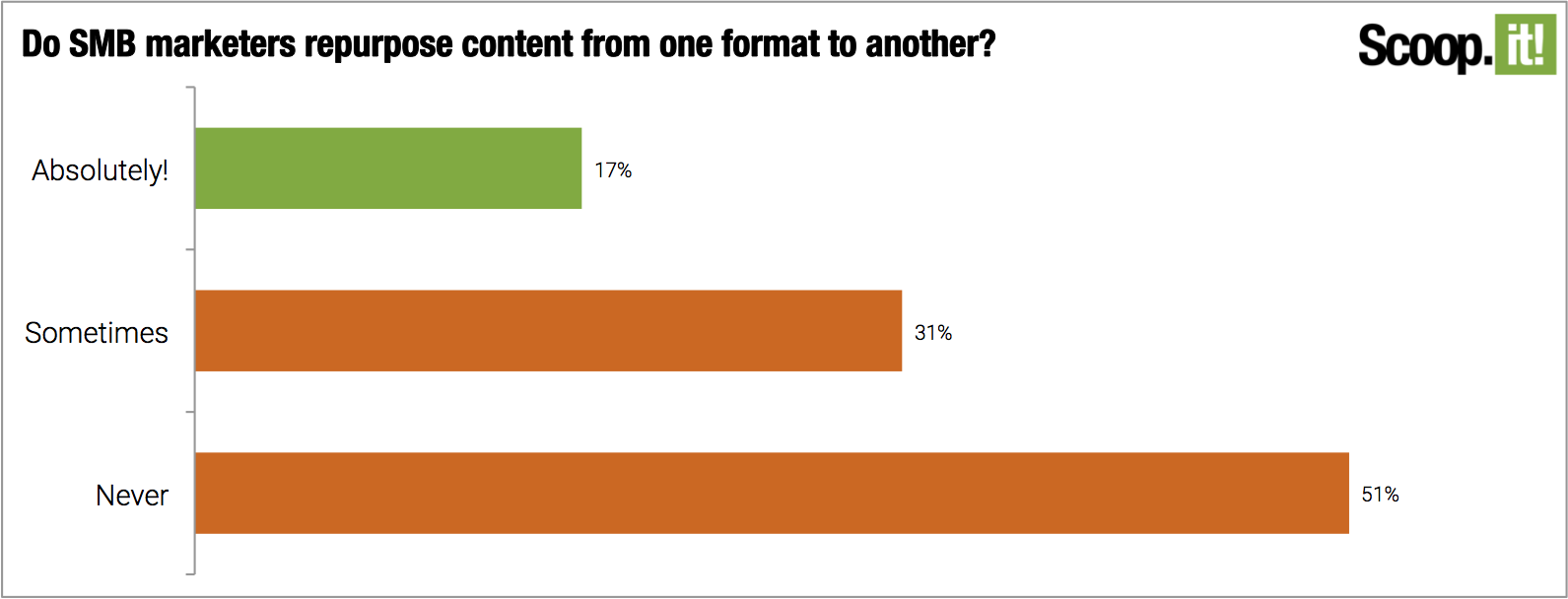 3. Employee advocacy
3. Employee advocacy
A couple weeks ago, I was discussing with Steve Rayson from Buzzsumo about their study that found out that a lot of content isn’t shared enough to make any significant traffic. What he found shocking was that some companies with more than 10 employees managed to have less than 8 shares per post (posts with 8 shares or less are 50% of the web’s content, he found). That means that this team is not even sharing their own content! Unsurprisingly, we found through our data that only 20% of marketers had managed to solve that problem, the rest having given up on this hope as other team members are too busy or because they feel it’s too much to ask.
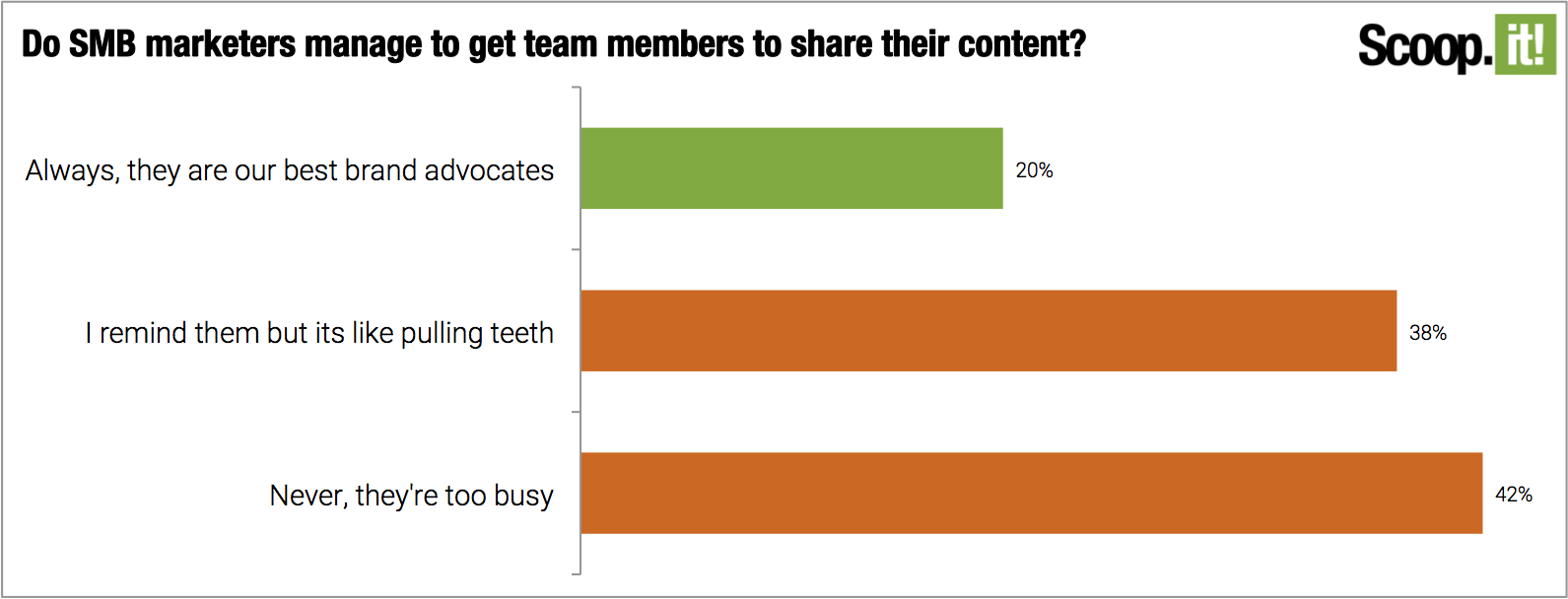
For the same reasons as mentioned on social media amplification but also because having team members share your content gives it a human touch and voice which makes it more credible and distributed, it’s absolutely essential to fix that in 2016 if you haven’t done so yet.
Create content feeds distributed over email, slack or your intranet to make it easy for employees to share what they like from your blog or even have some of your key execs or sales people delegate access to their social channels in your social media tool: there are several ways and tools to do that efficiently while getting everyone on board.
Your turn: how do you compare with your peers?
We hope the above will give you motivation and ideas on how to implement more lean content marketing best practices such as these ones to reach ROI in 2016. Because we like to make things simple for small marketing teams, we’ve focused on actionable, proven and easy-to-implement best practices in our Content Marketing grader so I strongly believe that they’re accessible and should be implemented by everyone. And if you’re not sure which you follow, take the 5’ test yourself.

